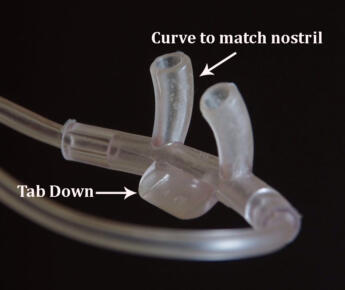What Is the Difference Between Standard and Flare-tip Cannulas?
What is the difference between standard and flare-tip cannulas?
A: In short, flare-tip cannulas more easily trigger a pulse from the EDS pulse-demand oxygen system.
As you know EDS stands for our Electronic Delivery System (Pulse-Demand™.) The triggering of the system depends on the EDS unit sensing the drop in pressure during the initial part of each inhalation. This is sensed internally by a pressure sensor, which then triggers a valve and delivers a pulse of oxygen.
In most cases, the standard-tip cannula will accommodate this requirement. However, if the user is experiencing trouble triggering the EDS unit or has larger than average-size nostrils, then the flare-tip cannula should be used.
This acts like a gasket, taking up some of the room between the cannula and the nostril. By doing so the ability of the EDS unit to sense the drop in pressure during inhalation is increased.
Generally speaking, with small or normal-size nostrils the standard cannula is recommended, while with larger nostrils or if having trouble triggering, the flare-tip cannula is recommended, allowing for the proper fit of the cannula.
Care should also be taken when donning the cannula to make sure that the cannula tab is pointing down towards the lip and the contour of the tips conforms to the natural contour of the nasal passage.
It should also be noted that some effort during the inhalation process is required to trigger the EDS unit.
By design, shallow or at-rest-type breathing most likely will not trigger the EDS unit, as this is also an indication of an onset apnea condition, which the unit is programmed to alarm.




